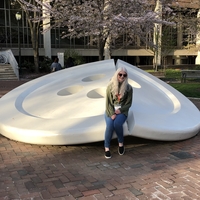Searching for Exoplanets with Machine Learning
Exoplanets, or planets outside our solar system, sometimes pass in front of their host star and cause a small dip in the star’s light that we can observe from Earth. By looking for these dips, or “transits,” we can identify new exoplanets, but transits are often small and difficult to find among the many thousands of stars we can see. It’s like looking for a needle in the proverbial haystack. Our solution was to train a computer to look for that needle. We are designing a neural network—a type of machine learning algorithm—to search through the vast quantities of stellar data available publicly from NASA and look for exoplanet transits. We discuss the methods used to approach the problem of exoplanet candidate searches with convolutional neural networks, with a special emphasis on various data preparation techniques.


Comments
Question
This project seems very fascinating, but also way outside my area of expertise! I have a question though: how does the accuracy of this method compare to current methods for identifying exoplanets?